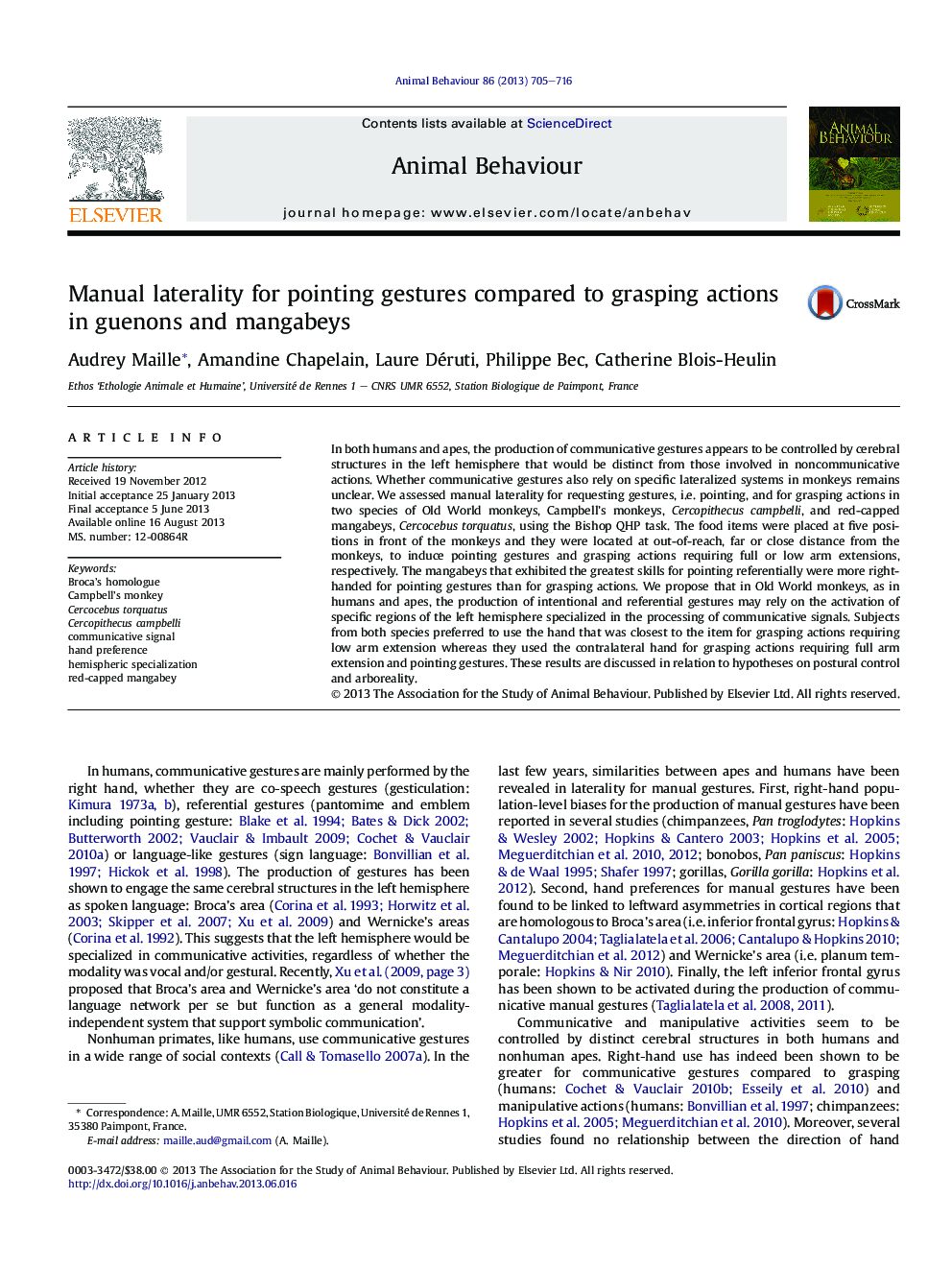| Article ID | Journal | Published Year | Pages | File Type |
|---|---|---|---|---|
| 10970710 | Animal Behaviour | 2013 | 12 Pages |
Abstract
In both humans and apes, the production of communicative gestures appears to be controlled by cerebral structures in the left hemisphere that would be distinct from those involved in noncommunicative actions. Whether communicative gestures also rely on specific lateralized systems in monkeys remains unclear. We assessed manual laterality for requesting gestures, i.e. pointing, and for grasping actions in two species of Old World monkeys, Campbell's monkeys, Cercopithecus campbelli, and red-capped mangabeys, Cercocebus torquatus, using the Bishop QHP task. The food items were placed at five positions in front of the monkeys and they were located at out-of-reach, far or close distance from the monkeys, to induce pointing gestures and grasping actions requiring full or low arm extensions, respectively. The mangabeys that exhibited the greatest skills for pointing referentially were more right-handed for pointing gestures than for grasping actions. We propose that in Old World monkeys, as in humans and apes, the production of intentional and referential gestures may rely on the activation of specific regions of the left hemisphere specialized in the processing of communicative signals. Subjects from both species preferred to use the hand that was closest to the item for grasping actions requiring low arm extension whereas they used the contralateral hand for grasping actions requiring full arm extension and pointing gestures. These results are discussed in relation to hypotheses on postural control and arboreality.
Related Topics
Life Sciences
Agricultural and Biological Sciences
Animal Science and Zoology
Authors
Audrey Maille, Amandine Chapelain, Laure Déruti, Philippe Bec, Catherine Blois-Heulin,
